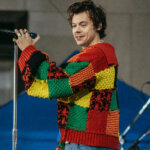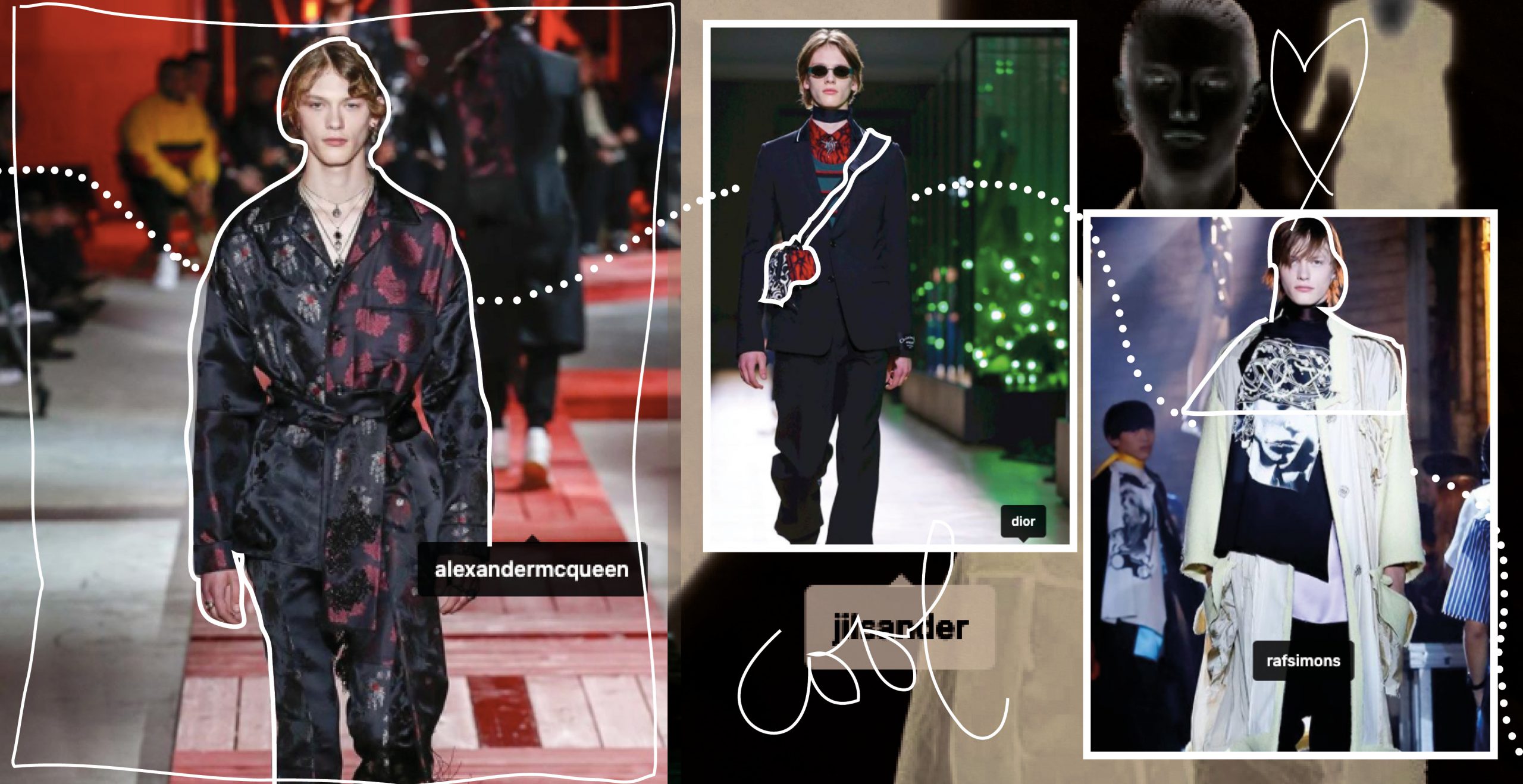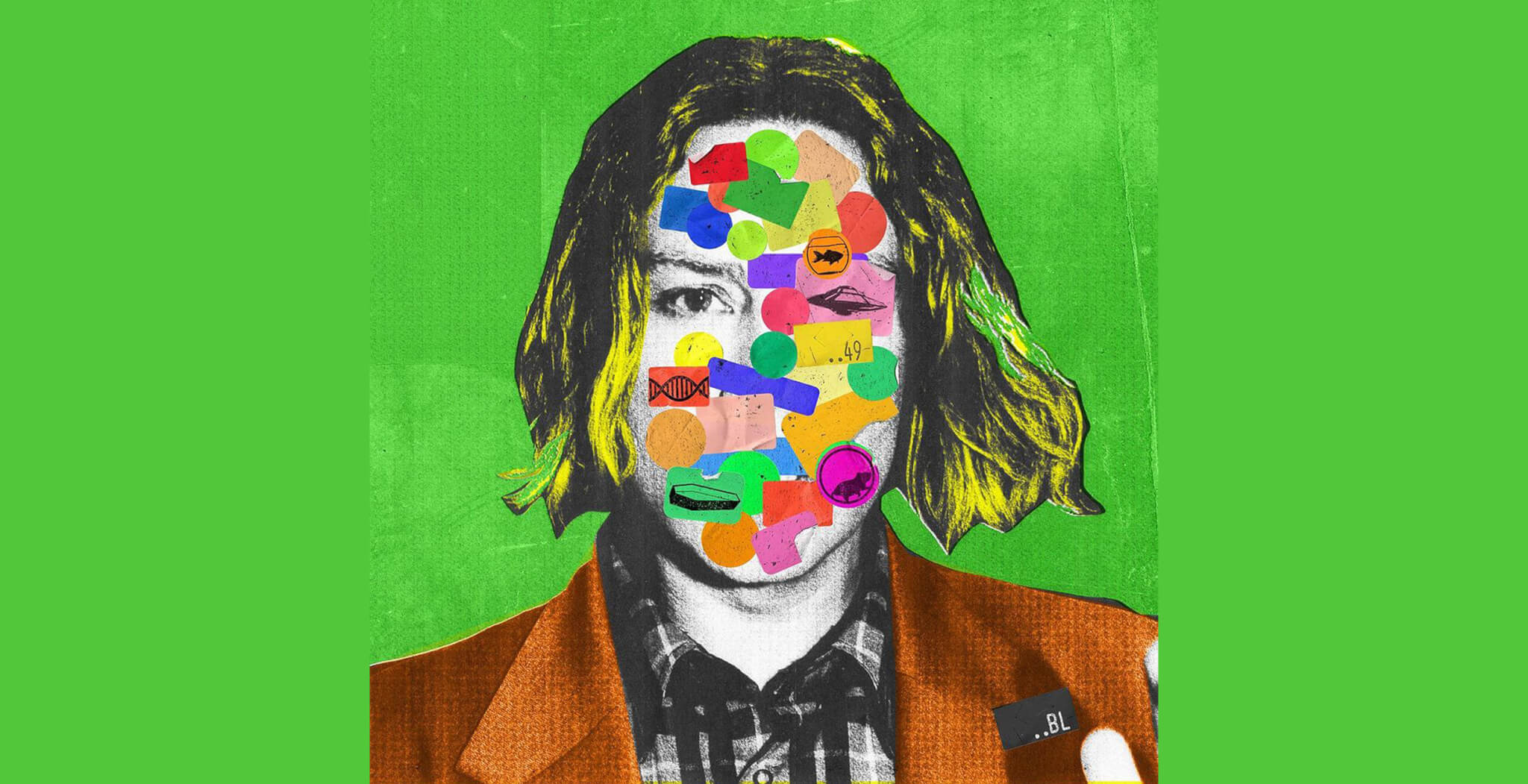Everywhere you look, people are crocheting, knitting, and weaving threads at cafes, during Zoom meetings, at the movies, and anywhere else. It’s not a granny’s practice anymore—confined to the walls of one’s own house—but a practice for anyone, regardless of their age and gender as its DIY and meditative qualities have an intrinsic capacity to bring people together.
This glorious comeback has translated to Instagram feeds and fashion runways too. Recently, in fact, we’ve seen MiuMiu’s campaigns showcasing crochet undies, Harry Styles breaking the Internet with his knitted colourful sweater, or decorating the set design of Dior’s Fall 2023 show. But crochet isn’t just a hobby of today for those trying to refocus their anxiety but it’s an ancient practice that tells memories of an ancient past.
Crochet is an ancient practice, whereby any type of yarn or fibre is stitched into an intricate and delicate combination by using a single hook (while knitting uses two) and, of course, your hands, fingers, and creativity. The hook dimensions can vary, depending on the project you want to make and the thickness of the yarn you want to use. Crochet, just like knitting, has a very mysterious history. I say mysterious because it is one of those artistic practices that have flourished all over the world, so its origins are difficult to determine—especially because a lot of ancient examples of these art crafts have degraded through time. You can find examples of early crochet in Indigenous South America, Africa, China, the Middle East, and of course, Europe, to name a few.
Every country has its own traditions but it seems that the language of crochet, with its rules, patterns, and calculations, has always been widespread and, of course, spoken and understood beyond nation-state borders. In Western history, crochet was a humble practice. It was considered a minor craft until Queen Victoria recognised the beauty behind laces crocheted by Irish women, who made scarves as a way to survive famine and poverty. Since then, crochet and its stitches have been used to make garments and clothes. The 1970s marked the peak of crochet art and, since then, crochet garments have been spotted on clothes during a lot of fashion runways, such as Dior, Dolce and Gabbana, Acne Studios, MiuMiu, and Chanel.
Today, the craft of crochet has gained popularity and praise. Tired of admiring crochet from afar, in fashion runways and magazines, a lot of people have taken the hook and, stitch after stitch, learned the ancient art of crochet. Since the advent of COVID-19, in fact, we have seen a resurgence of DIY fashion practices such as crochet and knitting. Our social media platforms are full of creatives making and designing new intricate and beautiful garments and fashion items that offer us a more sustainable alternative to fast fashion. As the pandemic forced us to stay at home, alone in our rooms, more and more people had time to learn new skills and share their creations with others. Some learned how to make bread, while others learned how to crochet and knit. But there is much more than what meets the eye behind the art of crochet. Behind those knots and colourful stitches, there is a history of resistance and community, of activism and liberation.
Besides offering people quite a lot of time away from the screen and teaching them repetition, relaxation, and meditation; crochet and other DIY fashion practices are a great way to counteract fast fashion revealing the complexity and times behind the production of a single item. Not only these aspects, but crochet, as well as knitting, have brought communities and various generations together, creating an intricate constellation of relations woven together like the various stitches behind a single hand-crafted garment. Crochet carries hidden intragenerational histories, experiences, and struggles. For instance, there are many communities all over the world where crochet is associated with memories of a past that has been lost, as Sofía Aguilar explains in an article published by De Los. Indigenous communities in Mexico and Colombia, to name a few, had their own ways of doing crochet used to make traditional pieces, such as the randa or the weaving of the Wayúu’s mochilas, which was almost lost due to the advent of European colonisers. As people reconnect to the practice, a lot of hidden and forgotten histories have been unravelled making crochet a radical practice to discuss the past while imagining the future.
Personally, crochet has brought me and my friends together. It has been more than a hobby to us: it is our unique way of communicating with each other. As a way to connect during the pandemic, my friend Alice and I called each other and started to crochet together on both sides of the screen. While crocheting, we shared daily stories, we exchanged patterns, techniques, and opinions. We used crochet as a creative and imaginative tool to create something that could go beyond our house walls. Colours and textures have also played a crucial role in our creations, becoming a reflection of our moods but also being used as ways to lift ourselves, as well as the people who wear the hats we make. Starting with instagram posts, my friend decided to open a company which I joined later. Quickly, we became a successful crochet family and Rathat, throughout the years, became our platform to connect with other people, bringing some (crocheted) joy during hard times.
At the same time, other creatives out there have joined the crochet community, there are many accounts out there on the Gram such as @crochetthecoronaaway, which opened during COVID-19. Since it entered the public consciousness, crochet has become a social practice. Many people have opened their own YouTube channels where they give tutorials and teach the basic stitches. Many new collectives have emerged organising events where people crochet and knit together. There are a lot of workshops being held around, performances, and much more to discover in almost every city! Especially in the West, we tend to associate crochet with grandmas making lacy tablecloths or houseware. But its recent comeback has made crochet one of the most appreciated practices to relax in social contexts.
As its popularity continues to grow and the crochet community knows no borders, I believe it is important to highlight the various histories behind this craft. Sometimes it’s difficult to understand what hides behind a trend and why everyone is making, buying, styling crochet pieces. It’s important that we share its social essence and intrinsic power to teach us slow fashion production and, especially, to bring people together, crossing generations, borders, genders, and races.
*Header: Harry Styles in the patchwork cardigan by JW Anderson, ©Getty Images




























